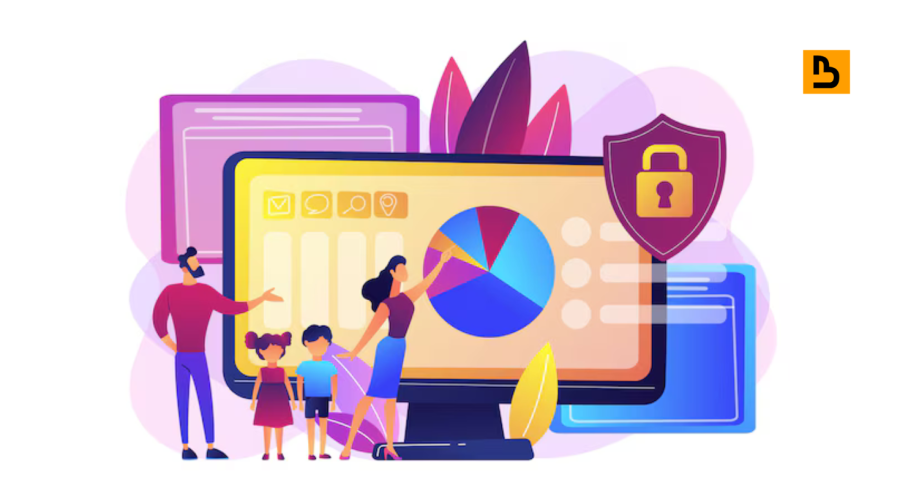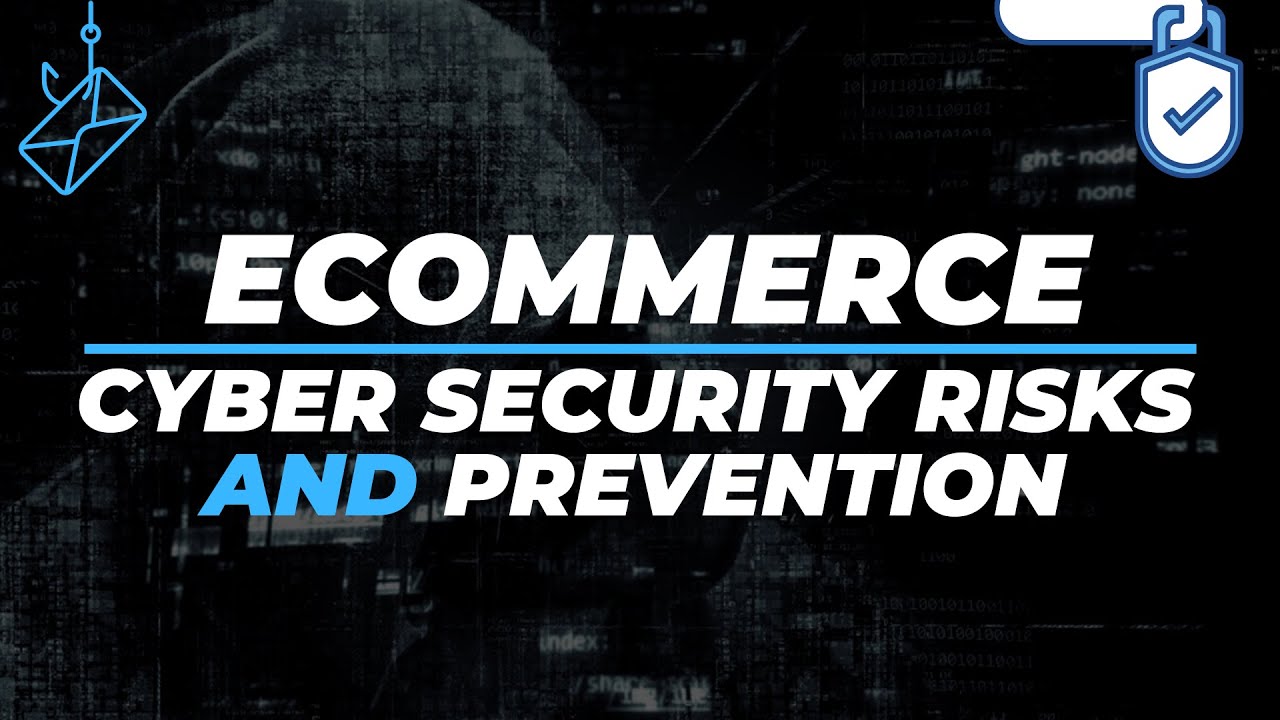Key Takeaways:
- Cybersecurity provides an extra layer of protection against financial frauds and credit card fraud during credit card transactions, ensuring that online shoppers’ sensitive information remains secure.
- Robust measures defend mobile devices from brute force attacks and other vulnerabilities, quickly identifying suspicious activity to prevent a major data breach.
- With cybersecurity playing a crucial role, e-commerce platforms can maintain customer trust and ensure uninterrupted operations by continuously monitoring and fortifying their security layers.
E-commerce has revolutionised how businesses and consumers interact, offering convenience, speed, and access to global markets. However, this digital transformation has also introduced an array of security challenges.
As companies move operations online and customers share sensitive personal and financial data over the internet, robust cybersecurity measures have become indispensable.
In this article, we will explore why is cyber security important in e-commerce, examine the threats that abound in the digital marketplace, and outline best practices to protect both businesses and consumers.
Protect Your Brand & Recover Revenue With Bytescare's Brand Protection software
The Digital Transformation of Commerce
Over the past two decades, e-commerce has evolved from a niche market to a dominant force in the global economy.
With the increasing reliance on online platforms for transactions, customer interactions, and data exchange, businesses face a double-edged sword: while digitalisation offers immense growth opportunities, it also exposes them to significant cyber risks.
The integration of advanced technologies—such as cloud computing, artificial intelligence, and mobile applications—into e-commerce platforms has streamlined operations and improved customer experiences. However, each technological advancement also opens up new avenues for cybercriminals.
Cybersecurity in E-Commerce
Cybersecurity involves a set of practices, technologies, and processes designed to protect networks, devices, programs, and data from unauthorised access or cybercrime attack.
For e-commerce platforms, cybersecurity is not just a technical issue but a strategic priority that impacts a company’s reputation, customer trust, and overall profitability.
Key Aspects of Cybersecurity in E-Commerce
- Data Protection: Protecting sensitive customer data such as personal identification details, payment information, and browsing behavior is paramount. Cybersecurity measures ensure that data is encrypted during transmission and securely stored to prevent data breaches.
- Transaction Security: With a high volume of online transactions, ensuring secure payment processing is critical. Robust cybersecurity practices help safeguard against fraud, unauthorised transactions, and financial theft.
- Operational Continuity: Cyber attacks can disrupt online business operations by causing website downtime, system failures, or data loss. Effective cybersecurity strategies ensure business continuity by preventing or mitigating such attacks.
- Reputation Management: A single security breach can severely damage a company’s reputation. Customers are less likely to engage with a platform perceived as insecure, which can lead to a loss of business and long-term brand damage.
Protect Your Brand & Recover Revenue With Bytescare's Brand Protection software
Types of Cyber Threats in E-Commerce

E-commerce platforms are constantly under siege by various cyber threats. Understanding these risks is the first step toward implementing effective e-commerce security measures.
1. Data Breaches
Data breaches are among the most significant risks in e-commerce.
When cybercriminals infiltrate a system, they can access vast amounts of sensitive customer information, including credit card details, addresses, and social security numbers. Such breaches not only lead to financial loss for customers but can also result in legal consequences and reputational damage for businesses.
The cost of a data breach can be astronomical, encompassing legal fees, fines, and remediation expenses.
2. Payment Fraud and Financial Theft
E-commerce platforms are prime targets for payment fraud. Cybercriminals use various techniques—such as phishing, identity theft, and malware attacks—to steal financial information and commit fraudulent transactions.
Even a single incident of payment fraud can erode customer trust and lead to substantial financial losses.
3. Distributed Denial-of-Service (DDoS) Attacks
DDoS attacks involve overwhelming an online service with a flood of internet traffic, rendering it inaccessible to legitimate users.
For e-commerce sites, such disruptions can lead to significant revenue losses, especially during peak shopping periods like holidays or special sales events. Beyond immediate financial impacts, repeated DDoS attacks can damage a company’s reputation and deter customers from using its platform.
4. Ransomware
Ransomware is a form of malicious software that encrypts an organisation’s data, rendering it inaccessible until a ransom is paid. For e-commerce businesses that rely on real-time data access and seamless customer service, a ransomware attack can be catastrophic.
The loss of critical data and operational paralysis not only impacts sales but can also lead to long-term recovery challenges.
5. Supply Chain Attacks
E-commerce platforms often integrate with multiple third-party vendors and service providers.
A vulnerability in any part of the supply chain can be exploited by cybercriminals to compromise the entire system.
Supply chain attacks can be particularly insidious because they exploit trusted relationships and can bypass traditional security measures.
6. Insider Threats
Not all cyber threats come from external sources. Insider threats—whether from disgruntled employees or negligent staff—can result in the intentional or unintentional exposure of sensitive data.
Insider threats are challenging to detect because they often involve individuals who already have authorised access to critical systems and data.
Economic Impacts of Cyber Threats on E-Commerce
The financial implications of cyber threats in e-commerce are far-reaching. A single cyber incident can lead to significant direct and indirect costs, including:
- Immediate Financial Losses: Fraudulent transactions, theft of funds, and direct costs associated with mitigating a breach can rapidly deplete a company’s resources.
- Long-Term Damage to Revenue: Loss of customer trust due to a security breach can lead to a long-term decline in sales. Customers may switch to competitors perceived as safer, and recovery can be slow and expensive.
- Regulatory Fines and Legal Expenses: Non-compliance with data protection regulations can result in hefty fines. Additionally, companies may face legal action from customers whose data has been compromised.
- Cost of Remediation: After a breach, significant resources must be allocated to remediation efforts. This can include system upgrades, cybersecurity training for employees, and investment in new technologies to prevent future incidents.
Protect Your Brand & Recover Revenue With Bytescare's Brand Protection software
Why is Cyber Security Important in E-Commerce?

Building Customer Trust
Trust is the cornerstone of e-commerce. Customers need to be confident that their personal and financial information is secure when transacting online.
A robust cybersecurity framework is essential for building and maintaining this trust. Consider the following points:
- Reassurance of Safety: When customers see that an e-commerce site employs advanced security protocols—such as HTTPS, two-factor authentication, and regular security audits—they feel more comfortable entering sensitive data.
- Compliance with Regulations: Many regions have strict data protection regulations (e.g., GDPR in Europe, CCPA in California) that mandate robust cybersecurity measures. Compliance not only avoids legal penalties but also serves as a trust signal to customers.
- Transparent Communication: In the event of a security incident, how a company responds can significantly influence customer perception. Proactive and transparent communication about cybersecurity measures, along with a clear plan for addressing breaches, can help maintain trust even in challenging circumstances.
Regulatory Compliance and Cybersecurity
Governments around the world are enacting stringent regulations to protect consumers and their data. Compliance with data protection laws is not only a legal obligation but also a critical component of a robust cybersecurity strategy.
For instance, the European Union’s General Data Protection Regulation (GDPR) and the California
Consumer Privacy Act (CCPA) impose severe penalties on companies that fail to secure personal data. Non-compliance can result in hefty fines, legal disputes, and long-term reputational damage.
The Role of Regulatory Compliance
- Building Consumer Confidence: When an e-commerce platform complies with international and local data protection regulations, customers are more likely to trust that their information is secure.
- Legal Protection: Adhering to these regulations provides legal safeguards and minimises the risk of litigation following a data breach.
- Operational Standards: Regulatory compliance encourages businesses to adopt standardised cybersecurity practices, which can enhance overall operational efficiency and reduce vulnerabilities.
The Human Factor in Cybersecurity
Despite advances in technology, human behavior remains a central factor in cybersecurity. Whether it’s an employee clicking on a phishing email or a user selecting a weak password, human error can open the door to cyberattacks.
Ecommerce businesses must therefore invest in training and cultivating a security-aware culture among employees and customers alike.
Strategies to Enhance Human-Centric Security
- Cybersecurity Training Programs: Regular training sessions can educate employees about current cybersecurity threats, safe online practices, and the importance of following security protocols.
- User Education: Informing customers about how to protect their personal information—such as recognising phishing attempts and using secure passwords—can help reduce the likelihood of successful cyberattacks.
- Clear Security Policies: Establishing and enforcing comprehensive e-commerce security policies ensures that all stakeholders understand their roles in protecting the platform’s integrity.
Balancing Innovation and Security
One of the most challenging aspects of cybersecurity in e-commerce is striking a balance between innovation and security.
While companies must innovate to stay competitive, they must also ensure that new technologies and processes do not introduce vulnerabilities. This balance requires a strategic approach that integrates security considerations into every stage of development and operations.
Best Practices for Balancing Innovation and Security
- Security by Design: Incorporate cybersecurity measures into the design phase of any new technology or service. This proactive approach minimises risks before they become embedded in the system.
- Agile Security Frameworks: Adopt flexible security frameworks that can evolve alongside technological advancements. Regularly review and update security protocols to address new threats.
- Cross-Functional Collaboration: Encourage collaboration between IT, security teams, and business development units. This ensures that innovative solutions are evaluated not only for their market potential but also for their security implications.
Cybersecurity Best Practices for E-Commerce

Given the evolving threat landscape, e-commerce businesses must adopt a proactive, layered approach to cybersecurity. Here are several best practices that can help safeguard online platforms:
Secure Socket Layer (SSL) Certificates and HTTPS
SSL certificates are fundamental to ensuring secure data transmission between a user’s browser and an e-commerce server.
Implementing HTTPS across the entire website not only protects customer data but also boosts search engine rankings and enhances the overall credibility of the site.
Multi-Factor Authentication (MFA)
MFA adds an additional layer of security by requiring users to provide multiple forms of verification before accessing their accounts. This simple measure can dramatically reduce the risk of unauthorised access, even if a password is compromised.
Regular Security Audits and Penetration Testing
Conducting frequent security audits and penetration tests helps identify vulnerabilities before they can be exploited by cybercriminals.
By regularly assessing their security posture, e-commerce businesses can stay ahead of emerging threats and make informed decisions about necessary upgrades.
Data Encryption
Encrypting sensitive data—both in transit and at rest—is one of the most effective ways to protect against data breaches. Even if attackers manage to access the data, encryption renders it unreadable without the proper decryption keys.
Employee Training and Awareness
Human error is often the weakest link in cybersecurity. Regular training programs can help employees recognise potential threats, such as phishing emails and social engineering tactics.
Creating a culture of cybersecurity awareness within the organisation is critical to reducing insider risks.
Secure Payment Gateways
Partnering with reputable payment processors and integrating secure payment gateways are essential for protecting financial transactions. These systems are designed to detect and prevent fraudulent activity, providing an additional layer of defense against financial theft.
Incident Response Planning
Even with robust cybersecurity measures, breaches can still occur.
An effective incident response plan is critical to minimising damage. This plan should outline clear steps for identifying, containing, and mitigating a breach, as well as procedures for communicating with stakeholders and regulatory bodies.
Regular Software Updates and Patch Management
Cybercriminals frequently exploit known vulnerabilities in outdated software.
Keeping all systems, applications, and plugins up to date with the latest security patches is a simple yet effective way to reduce the risk of an attack.
Emerging Trends and the Future of Cybersecurity in E-Commerce
As e-commerce continues to evolve, so too does the cybersecurity landscape. Emerging technologies and trends are reshaping both the threats and the defenses in this domain.
Artificial Intelligence and Machine Learning
Artificial intelligence (AI) and machine learning (ML) are increasingly being used to both attack and defend against cyber threats.
On one hand, cybercriminals can leverage AI to automate and refine their attacks. On the other hand, businesses can use AI-driven security tools to detect anomalies, predict potential threats, and respond in real time.
The integration of AI and ML into cybersecurity strategies is likely to become even more critical in the coming years.
Blockchain and Decentralised Security
Blockchain technology offers promising applications in enhancing data integrity and security.
By decentralising data storage and enabling secure, transparent transactions, blockchain can reduce the risks associated with centralised data repositories.
While still in its early stages for widespread adoption in e-commerce company, blockchain technology has the potential to revolutionise how digital transactions are secured.
Internet of Things (IoT) and Connected Devices
The proliferation of IoT devices—ranging from smart home gadgets to wearable technology—introduces new vulnerabilities in the e-commerce ecosystem. Each connected device represents a potential entry point for cybercriminals.
As e-commerce platforms increasingly integrate IoT technologies to enhance user experiences (for instance, through personalised marketing or smart inventory management), ensuring the security of these devices will be paramount.
Cloud Security
Cloud computing has become the backbone of many e-commerce operations, providing scalable infrastructure and efficient resource management. However, migrating data and services to the cloud introduces new security challenges.
Businesses must ensure that their cloud service providers maintain robust security protocols and that they implement additional measures such as encryption, access controls, and regular security audits.
What’s Next?
Cybersecurity is not merely a technical requirement for e-commerce—it is a fundamental pillar of trust, financial integrity, and operational resilience.
With cyber threats evolving at an unprecedented pace, businesses must adopt a proactive, layered approach to secure their platforms, protect sensitive data, and maintain customer trust.
From safeguarding personal information and ensuring secure transactions to mitigating the risk of data breaches and operational disruptions, the importance of cybersecurity in e-commerce cannot be overstated.
Investing in robust cybersecurity measures today not only protects an e-commerce business from immediate threats but also lays the groundwork for sustainable growth and innovation.
As the digital landscape continues to evolve, companies that prioritise cybersecurity will be better positioned to navigate future challenges, comply with regulatory demands, and ultimately thrive in a competitive global market.
Bytescare helps protect your digital world from the dangers of cybercrime by offering state-of-the-art solutions to secure your data and digital identity.
Don’t wait until it’s too late—explore our advanced protection tools and get a head start in defending your online presence. Take control of your cybersecurity now. Book a demo now to secure your digital future!
The Most Widely Used Brand Protection Software
Find, track, and remove counterfeit listings and sellers with Bytescare Brand Protection software

FAQs
How does cybersecurity prevent credit card fraud?
It implements an extra layer of protection through encryption and monitoring systems to secure credit card transactions and detect suspicious activity early.
Why are mobile devices a focus in e-commerce cybersecurity?
Mobile devices are frequently used for online shopping; securing them prevents brute force attacks and other exploits that could lead to data breaches.
What measures help protect against brute force attacks?
Techniques such as strong authentication protocols and rate limiting add layers of protection that reduce the risk of brute force attacks on user accounts.
How do e-commerce platforms detect suspicious activity?
Advanced monitoring systems and anomaly detection tools track user behavior and flag suspicious activity, mitigating potential breaches before they escalate.
What happens during a major data breach in e-commerce?
A major data breach can compromise customer information and credit card transactions, leading to financial frauds and loss of customer trust if not promptly addressed.
What can online shoppers do to enhance their own security?
Online shoppers should use strong, unique passwords, monitor their accounts regularly, and report any suspicious activity immediately to add an extra layer of protection to their transactions.
Ready to Secure Your Online Presence?
You are at the right place, contact us to know more.



